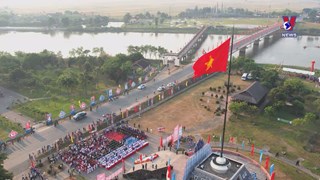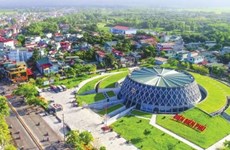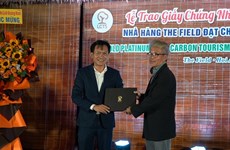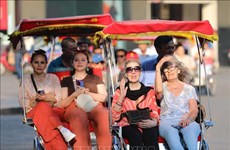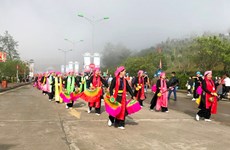Nam Dinh develops tourism by preserving indigenous culture
The northern coastal province of Nam Dinh, dubbed the land of churches, has taken advantage of indigenous culture to develop tourism, especially spiritual, cuisine and community-based tourism.
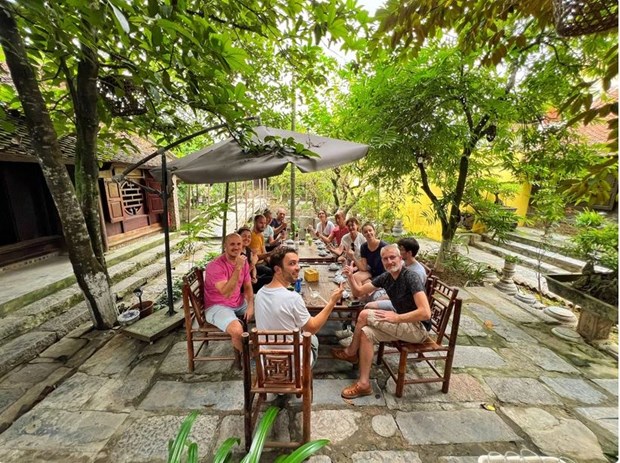 Foreign tourists choose a homestay imbued with the northern region’s cultural identity (Photo: VietnamPlus)
Foreign tourists choose a homestay imbued with the northern region’s cultural identity (Photo: VietnamPlus)Do Duc Chung, administrator of the website Nam Dinh Land and People and an experienced tour guide in the province, said that this locality has various traditional cultural values and heritage for visitors to explore and experience.
Coming to Nam Dinh, visitors can start with a heritage journey from Tran temple to Phu Day, one of the country's prominent cradles of Mother Goddess worship, Chung stated, advising tourists to Co Le pagoda in Truc Ninh district and Keo pagoda in Hanh Thien village of Xuan Truong district, or churches with unique architecture scattering in the province.
Nam Dinh is home to over 100 craft villages with a lot of those renowned far and wide such as Tong Xa bronze casting, Cat Dang lacquer, La Xuyen wood carving, Co Chat silk, Cu Tru weaving (Truc Ninh), Vi Khe ornamental plants (Nam Truc), Xuan Tien brass (Xuan Truong), and Hai Minh wooden furniture (Hai Hau).
The province, which was once the country's second largest city, established under the Tran Dynasty back in the 13th century, behind Thang Long (now Hanoi), also owns two special national relic sites, 87 national and 319 provincial ones, and 11 national intangible cultural heritage.
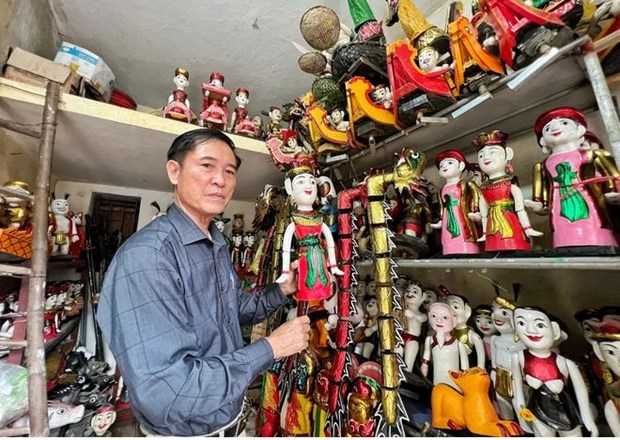 Nam Dinh is one of the cradles of Vietnamese water puppetry (Photo: VietnamPlus)
Nam Dinh is one of the cradles of Vietnamese water puppetry (Photo: VietnamPlus)To this end, from the very beginning, Nhan and her colleagues have persisted in pursuing Asia's sustainable tourism standards and been supported by the Swiss Sustainable Tourism Development. Accordingly, visitors are instructed not to use plastic water bottles or disposable items, and encouraged to bring their own personal items to minimise waste into the environment.
The company has also replicated the high-quality community tourism model in different districts of Nam Dinh by assisting local communities to restructure traditional houses but still preserve the indigenous characteristics, and seek consumption channels for handicrafts and agricultural products to bring profits to the locality.
Ecohost’s high-end homestay model is being scruntinised by competent authorities to recognise it as a 5-star OCOP (one commune one product) product, and is currently attracting a large number of foreign tourists. Many visitors from European countries such as France, Denmark, Italy, and Spain have chosen Ecohost as their accommodation.
In his 13-day journey to explore Vietnam, journalist Saiseau Camille from France chose Ninh Binh and Nam Dinh provinces as his northern destinations. He said that Ecohost, a traditional small house typical of the northern region of Vietnam, perfectly suits his needs because he does not like to stay in grand hotels while travelling.
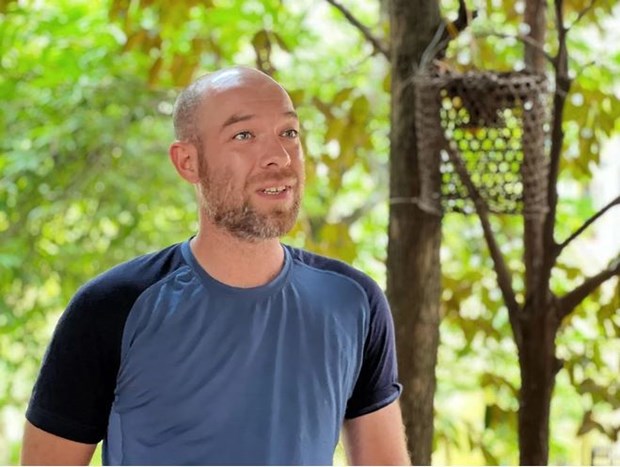 In his 13-day journey to explore Vietnam, journalist Saiseau Camille chooses Ninh Binh and Nam Dinh provinces as his northern destinations (Photo: VietnamPlus)
In his 13-day journey to explore Vietnam, journalist Saiseau Camille chooses Ninh Binh and Nam Dinh provinces as his northern destinations (Photo: VietnamPlus)Sharing the same view, Vandamme Christine, another French national, said that she will definitely return to Vietnam, as she was impressed by local people’s smiles and friendliness./.
